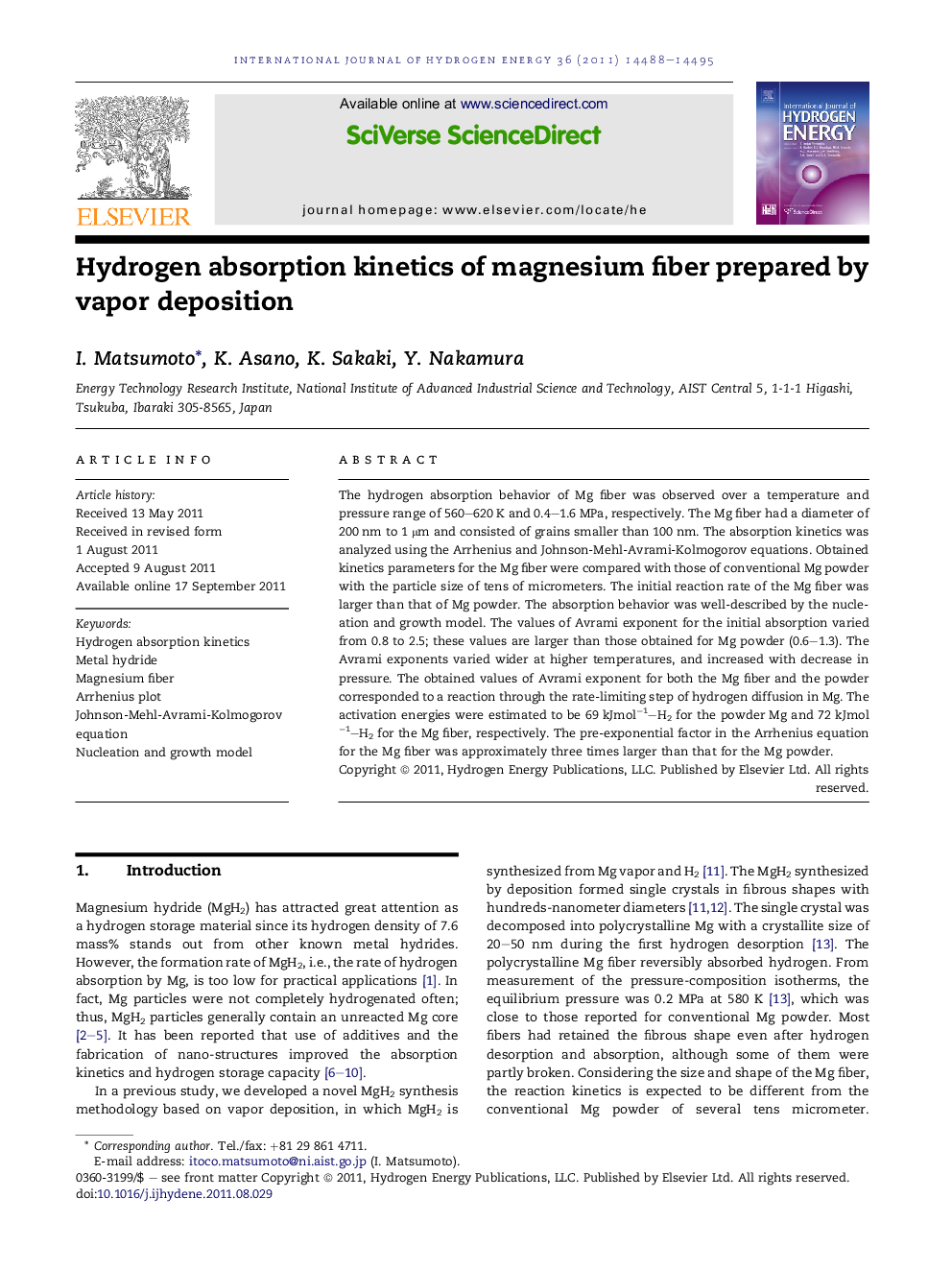| Article ID | Journal | Published Year | Pages | File Type |
|---|---|---|---|---|
| 1275657 | International Journal of Hydrogen Energy | 2011 | 8 Pages |
The hydrogen absorption behavior of Mg fiber was observed over a temperature and pressure range of 560–620 K and 0.4–1.6 MPa, respectively. The Mg fiber had a diameter of 200 nm to 1 μm and consisted of grains smaller than 100 nm. The absorption kinetics was analyzed using the Arrhenius and Johnson-Mehl-Avrami-Kolmogorov equations. Obtained kinetics parameters for the Mg fiber were compared with those of conventional Mg powder with the particle size of tens of micrometers. The initial reaction rate of the Mg fiber was larger than that of Mg powder. The absorption behavior was well-described by the nucleation and growth model. The values of Avrami exponent for the initial absorption varied from 0.8 to 2.5; these values are larger than those obtained for Mg powder (0.6–1.3). The Avrami exponents varied wider at higher temperatures, and increased with decrease in pressure. The obtained values of Avrami exponent for both the Mg fiber and the powder corresponded to a reaction through the rate-limiting step of hydrogen diffusion in Mg. The activation energies were estimated to be 69 kJmol−1–H2 for the powder Mg and 72 kJmol−1–H2 for the Mg fiber, respectively. The pre-exponential factor in the Arrhenius equation for the Mg fiber was approximately three times larger than that for the Mg powder.
► We prepared Mg fiber with a diameter of 200 nm to 1 μm and consisting of grains smaller than 100 nm. ► Hydrogen absorption kinetics of the Mg fiber was analyzed using the Arrhenius and Johnson-Mehl-Avrami-Kolmogorov equations. ► The initial reaction rate of the Mg fiber was larger than that of the conventional Mg powder. ► The absorption behavior was well-described by the nucleation and growth model.
